Opinion & Analysis
Getting started with basic club repair, with tips from Tom Wishon
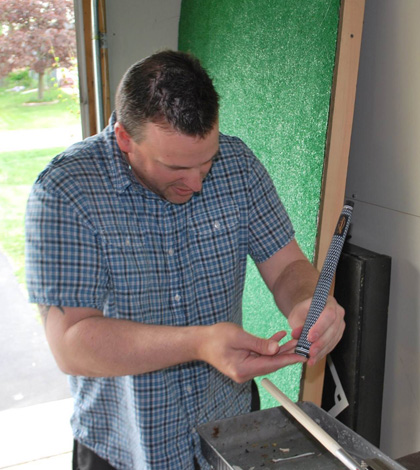
My journey into tinkering with golf clubs started small. A bottle of nail polish, nail polish remover and a simple “how-to” video on how to add new paint fill to a golf club.
Soon after, I found myself at the local hobby store purchasing a variety of model paints in every color I could find. Before I knew it, I found myself stamping, torching, applying gun blue, coffee grounds and motor oil finishes to my wedges.
As fun as it was, what I am about to share with you isn’t about custom finishes or paint fills. I am going to help you get started with the basic needs for the average player to get started re-gripping your own clubs. I am also going to share the basic needs for minor club repairs and club building at the hobbyist level.
In the past, I always had my local pro shop install new grips and shafts for me. I figured it was easier to just pay someone to do the work rather than purchase all the equipment I needed to do it myself. As time went on, I found that my grips tended to feel very different after each re-grip — one time they would feel too thin and the next they seemed too thick. It was frustrating to say the least.
The final straw for me was when I had a new grip put on a driver and requested a standard grip with seven wraps of build-up tape (I prefer a mid-size grip but with a firm feel). But when I picked up my club, it felt very thin. I asked the club tech if the grip felt like seven wraps and he agreed that there was no way it could be. He then took my club to the back, removed the grip and discovered only two wraps of tape. That was enough motivation for me to take the time and learn how to do it myself.
So who am I to give advice on what is needed for club building? After all, I can tell you that I am not a professional club builder — I don’t build clubs for a living, and I don’t work in a golf pro shop. I perform all my own work on my clubs in a small work area located in my garage. So why should you listen to what I have to share when it comes to building clubs? Because I had the pleasure of speaking with Tom Wishon on this very matter.
Wishon has decades of experience in the field designing golf clubs, and is also a master club builder and fitter. We spoke in detail on all the necessities needed to do basic club building and repair and I am going to share his wisdom with you.
Before you start you need to ask yourself:
What are the essential tools needed for club repair?
According to Wishon, the answer to the question depends on what club repair tasks the person wants to perform.
That’s why I’m going to break down the tools needed for club repair into two different sections: basic repairs and advanced repairs. At the end of the story, I share tips from Wishon that will help aspiring club builders cut through the rookie mistakes of club building.
Basic Repairs
Tools Needed:
- At least a 4-to-6-foot long sturdy workbench.
- Heavy duty bench vise with 4-inch jaws.
- Shaft vise clamp.
- Razor blade knife with a hook blade.
- Heat gun.
- Strong blade knife.
- Two-inch-wide roll of masking tape.
- Two-inch-wide two-way grip installation tape.
- Calipers.
- Catch pan.
- Grip solvent or mineral spirits.
All operations will be performed on your work bench, seeing that this will be your primary work area. If space is ample, it is better to go with a 6-foot long work bench. Your vise will be top mounted and should have at least a 4-inch jaw — be sure to use a shaft vise clamp when using the vise to hold shafts. This will prevent the metal jaws from damaging any paint or graphics that the shaft may have.
Mount your catch pan beneath your shaft vise. The catch pan will help keep your work area clean from grip solvent drippings and will aid in recycling the solvent.
Wishon believes it is better and easier to install grips with an air compressor. However, it is something that club makers only do when they have a lot of business, because of the cost of the compressor and the special nozzle device required to attach to the air hose to blow the grips on with the compressed air. If a person already has an air compressor, buying the nozzle and installing grips that much is cleaner than using grip solvent.
I have seen and heard my share of horror stories on clubs that have been ruined due to shabby work: short cuts, carelessness and a lack of knowledge. I have also had my own experiences of sub-par work performed on my gear. I once had a 3 wood re-shafted and explained that I did not want an extension placed in the butt end of the grip.
After receiving the 3 wood, I noticed that my grip felt odd. It felt as though there was a seam in it. I cut the grip off to find that not only did the club builder place an extension in my shaft, but that he used a piece of a broken shaft to extend it rather than using a real extension. That was enough to push me toward learning how to do shaft pulls and installs.
Advanced Repairs
Tools Needed:
- A reasonable quality graphite shaft puller tool.
- A Lock-Tite shaft holder.
- Heavy duty leather work gloves.
- A 1-by-30-inch small belt sander.
- A 48-inch ruler.
- An abrasive shaft cut off wheel to mount to a 5- or 6-inch bench grinder.
- Small butane torch.
- A stiff wire brush wheel.
- Bamboo skewers cut in half lengthwise.
- Cut up squares from a cardboard box, at 4-by-4.
- OVERNIGHT CURE Two-part shafting epoxy with a lap shear strength of at least 3,000 psi.
- An assortment of ferrules for 0.335 parallel, 0.355 taper tip and 0.370 parallel shafts.
- An assortment of tip weights in different weights (2 grams, 4 grams, 6 grams, 9 grams) in different sizes.
- One-half-inch wide roll of lead tape.
- A 14-inch fulcrum Lorythmic or Prorythmic swingweight scale.
As you venture into a more detailed roll of a club builder, you will soon learn how valuable leather work gloves are — just ask any builder who has accidentally touched a heated hosel with a bare hand.
Working with a propane torch works fine, but its flame is larger and hotter than a small butane torch, and therefore is easier to burn the paint at the base of the hosel on metal woods, or to scorch the metal surface of the hosel. Heat guns will work as well, although Wishon said using one for softening the epoxy takes much too long, and it is difficult to control where the heat goes on the hosel to prevent scorching the paint at the base of the hosel on metal woods.
For prepping the tips of shafts, Wishon recommended a small belt sander, which he said is best for roughing up all shaft tips.
“(For experienced club makers) The small belt sanders are inexpensive and do the job so much faster and more consistently,” Wishon said.
But he said that beginning club builders should rough up the tips of graphite shafts by hand using strips of 100 grit cloth back sand paper. This is better for beginning club makers to do until he or she learns the “touch” required to abrade a graphite shaft tip using the belt sander. To prevent sanding too much off a graphite shaft tip with a belt sander, the use of a TRizac belt is often better better. However, with practice the club maker can use the 100 grit sanding belt to rough up the tip of graphite shafts.
Wishon also recommends abrading the tip of steel shafts with a small belt sander with 100 grit or medium grit sanding belts, because even for beginners hand sanding steel shafts is tedious, time consuming and more difficult.
The 1-by-30 belt sander can also be used to finish ferrules to make the bottom of the ferrule flush to the top of the hosel.
“Doing this requires the belt on the small belt sander to be switched to one of the special ferrule turning belts offered by the larger component supply companies,” Wishon said. “The best ferrule turning belt is the BLUE fabric belt sold by some of the larger component repair supply companies.”
Ferrules can also be finished using narrow strips of 180 grit cloth back sandpaper, followed by wipe finishing the ferrule with a paper towel wetted with acetone. Wishon describes this simple process:
“The club is secured in the vise clamp in the vise with the club head end protruding out toward the club maker. Protective tape is wrapped around the very top of the hosel to prevent the sandpaper from scratching the top of the hosel. As like buffing shoes with a cloth, the sandpaper is used to sand the bottom of the ferrule flush to the top of the hosel, followed by steel wool rubbing the ferrule to smooth the sanding scratches, followed by an acetone wipe to restore the shine of the plastic ferrule. Thin protective gloves should be worn when using acetone.”
Abrasive cut off wheels are the best way to cut any shaft, whether steel or graphite, Wishon said.
“A rotating tubing cutter can be used to cut steel shafts, but really, they are a real pain in the a** to use, they wear out quickly and they cannot be used on graphite shafts of you will splinter and damage the graphite shaft., Wishon said. “Bench grinders are cheap.”
Also, acquiring a stiff wire brush wheel to put on the other end of the bench grinder is recommended.
“This is used to de-burr the steel shafts after they are cut with the abrasive cut off wheel that would be mounted to the other end of the bench grinder.” Wishon said.
When choosing epoxy, you want an OVERNIGHT CURE two-part shafting epoxy with a lap shear strength of at least 3,000 psi.
“It is OK to have fast cure epoxy for quick jobs, but only buy the fast cure epoxies from reputable club making suppliers and NOT, NOT, NOT from a hardware store,” Wishon said. “While there are some hardware fast cure epoxies that can work, unless you know for sure they have adequate lap shear strength, you are risking a lawsuit by using any epoxy that you do not know is made with an adequate lap shear strength.”
Tips From A Master
So what can we expect as a beginner?
According to Wishon, he said that simple mistakes can and will occur in our first few attempts and these can be and not limited to the following:
- Over-sanding the tip end of graphite shafts in preparation for shaft installation. “Only a very light sanding to rough all surfaces of the tip is necessary.”
- Over heating the hosel to soften the epoxy for shaft removal to the point the metal or paint or both are scorched. “With the lower temperature butane torch it is FAR easier to control the amount of heat and the location of the flame to avoid overheating.”
- Not fully wetting both the inside of the grip and all surfaces of the grip tape before trying to install the grip. This lack of solvent will allow the grip to get “stuck” and does not slide fully on the shaft.”
- Not being sure that the grip is fully pushed all the way on the shaft so that the butt of the shaft meets the very end of the grip.
- Using too much epoxy in the hosel and on the tip end of the shaft when the shaft is installed. “Only a thin coating of epoxy is required on all surfaces of the shaft and on all surfaces of the hosel walls. If too much epoxy is used, most all of it ends up being pushed up the inside of the tip of the shaft, which presents the risk of it breaking loose later on to cause a rattle in the shaft. Also, too much epoxy adds to the weight of the head and could cause your final swing weight to be higher than what you wanted.”
- Not roughing up the tip of STEEL shafts enough, and then having the head come off the shaft in play. “Steel shafts are tough as nails. The chrome plating on them is very tough and wants to resist sanding. So you can be rough with your tip sanding on steel shafts and never worry about damaging the shafts.”
- Improper cutting of graphite shafts so they develop a split lengthwise. “When using an abrasive cut off wheel, as the wheel is about to cut fully through the shaft, always ROTATE the shaft a little to prevent this problem.”
- Not measuring the two parts of the epoxy accurately enough or not mixing the two parts thoroughly enough and then not having the epoxy cure to proper hardness and strength.
- When shaft cutting, measure TWICE and then cut only ONCE!
Practice… Practice… Practice and More Practice
If you have the time and extra money, attending one of the week-long club making and club repair schools that are offered by Golf Works and Mitchell Golf will definitely shorten the learning curve a lot and will also give the beginning club maker a good dose of confidence in the development of his skills.
When the time comes where the beginning club builder feels confident and a sense of skill have developed, “DO NOT do any club work for golfers who are not a close friends or family members until you get GOOD at all the workbench skills,” Wishon said.
“It takes 50 good jobs to overcome the damage that can be done to your reputation from one bad job done to the wrong player’s clubs,” Wishon said. “Do not allow yourself to get what we call “sophomore-itis” in your club making. What we mean is that it is VERY common for a person to get overconfident and think they are a top-quality club maker when in reality they do not know as much as they think they do.”
Taking the plunge from player to club builder can be a hesitant one. From my experience I can say this much, it’s not as hard as you think. You don’t need to spend a fortune to get started. Start small with simple re-grips.
If the time comes and you want to proceed a little further into club building, don’t be afraid to make mistakes. Mistakes are going to happen, it’s a part of the learning process. During my first shaft install, I was so excited that I forgot to place the ferule on the shaft before installing the head.
But stick with it, because after all is said and done, there is nothing more rewarding than playing with gear that YOU built.
- LIKE72
- LEGIT3
- WOW3
- LOL3
- IDHT5
- FLOP2
- OB1
- SHANK1
Opinion & Analysis
Ryan: Why the race to get better at golf might be doing more harm than good

B.F. Skinner was one of the most important psychologists of the 20th century, developing the foundation of the development of reinforcement, and in doing so, creating the concept of behaviorism. In simple terms, this means that we are conditioned by our habits. In practical terms, it explains the divide between the few and far between elite instructors and college coaches.
To understand the application, let’s quickly review one of B.F. Skinner’s most important experiments; superstitions in the formation of behavior by pigeons. In this experiment, food was dispensed to pigeons at random intervals. Soon, according to Skinner, the pigeons began to associate whatever action they were doing at the time of the food being dispensed. According to Skinner, this conditioned that response and soon, they simply haphazardly repeated the action, failing to distinguish between cause and correlation (and in the meantime, looking really funny!).
Now, this is simply the best way to describe the actions of most every women’s college golf coach and too many instructors in America. They see something work, get positive feedback and then become conditioned to give the feedback, more and more, regardless of if it works (this is also why tips from your buddies never work!).
Go to a college event, particularly a women’s one, and you will see coaches running all over the place. Like the pigeons in the experiment, they have been conditioned into a codependent relationship with their players in which they believe their words and actions, can transform a round of golf. It is simply hilarious while being equally perturbing
In junior golf, it’s everywhere. Junior golf academies make a living selling parents that a hysterical coach and over-coaching are essential ingredients in your child’s success.
Let’s be clear, no one of any intellect has any real interest in golf — because it’s not that interesting. The people left, including most coaches and instructors, carve out a small fiefdom, usually on the corner of the range, where they use the illusion of competency to pray on people. In simple terms, they baffle people with the bullshit of pseudo-science that they can make you better, after just one more lesson.
The reality is that life is an impromptu game. The world of golf, business, and school have a message that the goal is being right. This, of course, is bad advice, being right in your own mind is easy, trying to push your ideas on others is hard. As a result, it is not surprising that the divorce rate among golf professionals and their instructors is 100 percent. The transfer rate among college players continues to soar, and too many courses have a guy peddling nefarious science to good people. In fact, we do at my course!
The question is, what impact does all this have on college-age and younger kids? At this point, we honestly don’t know. However, I am going to go out on a limb and say it isn’t good.
Soren Kierkegaard once quipped “I saw it for what it is, and I laughed.” The actions of most coaches and instructors in America are laughable. The problem is that I am not laughing because they are doing damage to kids, as well as driving good people away from this game.
The fact is that golfers don’t need more tips, secrets, or lessons. They need to be presented with a better understanding of the key elements of golf. With this understanding, they can then start to frame which information makes sense and what doesn’t. This will emancipate them and allow them to take charge of their own development.
- LIKE3
- LEGIT2
- WOW0
- LOL0
- IDHT0
- FLOP0
- OB0
- SHANK3
19th Hole
Vincenzi’s 2024 Valspar Championship betting preview: Elite ballstrikers to thrive at Copperhead

The PGA TOUR will stay in Florida this week for the 2024 Valspar Championship.
The Copperhead Course at Innisbrook Resort is a par 71 measuring 7,340 yards and features Bermudagrass greens overseeded with POA. Infamous for its difficulty, the track will be a tough test for golfers as trouble lurks all over the place. Holes 16, 17 and 18 — also known as the “Snake Pit” — make up one of the toughest three-hole stretches in golf and should lead to a captivating finish on Sunday.
The field is comprised of 156 golfers teeing it up. The field this week is solid and is a major improvement over last year’s field that felt the impact of players skipping due to a handful of “signature events” in a short span of time.
Past Winners at Valspar Championship
- 2023: Taylor Moore (-10)
- 2022: Sam Burns (-17)
- 2021: Sam Burns (-17)
- 2019: Paul Casey (-8)
- 2018: Paul Casey (-10)
- 2017: Adam Hadwin (-14)
- 2016: Charl Schwartzel (-7)
- 2015: Jordan Spieth (-10)
In this article and going forward, I’ll be using the Rabbit Hole by Betsperts Golf data engine to develop my custom model. If you want to build your own model or check out all of the detailed stats, you can sign up using promo code: MATTVIN for 25% off any subscription package (yearly is best value).
Key Stats For Copperhead
1. Strokes Gained: Approach
Strokes Gained: Approach grades out as the most important statistic once again this week. Copperhead really can’t be overpowered and is a second-shot golf course.
Total SG: Approach Over Past 24 Rounds (per round)
- Tony Finau (+.90)
- Nick Taylor (+.81)
- Justin Thomas (+.77)
- Greyson Sigg (+.69)
- Christiaan Bezuidenhout (+.67)
2. Good Drive %
The long hitters can be a bit limited here due to the tree-lined fairways and penal rough. Playing from the fairways will be important, but laying back too far will cause some difficult approaches with firm greens that may not hold shots from long irons.
Golfers who have a good balance of distance and accuracy have the best chance this week.
Good Drive % Over Past 24 Rounds
- Brice Garnett (+91.3%)
- Zach Johnson (+91.1%)
- Sam Ryder (+90.5%)
- Ryan Moore (+90.4%)
- Aaron Rai (+89.7%)
3. Strokes Gained: Ball Striking
Adding ball-striking puts even more of a premium on tee-to-green prowess in the statistical model this week. Golfers who rank highly in ball-striking are in total control of the golf ball which is exceedingly important at Copperhead.
SG: Ball Striking Over Past 24 Rounds:
- Xander Schauffele (+1.32)
- Keith Mitchell (+1.29)
- Tony Finau (+1.24)
- Cameron Young (+1.17)
- Doug Ghim (+.95)
4. Bogey Avoidance
With the conditions likely to be difficult, avoiding bogeys will be crucial this week. In a challenging event like the Valspar, oftentimes the golfer who is best at avoiding mistakes ends up on top.
Gritty golfers who can grind out difficult pars have a much better chance in an event like this than a low-scoring birdie-fest.
Bogey Avoidance Over Past 24 Rounds
- Brice Garnett (+9.0)
- Xander Schauffele (+9.3)
- Austin Cook (+9.7)
- Chesson Hadley (+10.0)
- Greyson Sigg (+10.2)
5. Strokes Gained: Total in Difficult Conditions
Conditions will be tough this week at Copperhead. I am looking for golfers who can rise to the occasion if the course plays as difficult as it has in the past.
Strokes Gained: Total in Difficult Conditions Over Past 24 rounds
- Xander Schauffele (+1,71)
- Min Woo Lee (+1.39)
- Cameron Young (+1.27)
- Jordan Spieth (+1.08)
- Justin Suh (+.94)
6. Course History
That statistic will tell us which players have played well at Copperhead in the past.
Course History Over Past 24 rounds
- Patrick Cantlay (+3.75)
- Sam Burns (+2.49)
- Davis Riley (+2.33)
- Matt NeSmith (+2.22)
- Jordan Spieth (+2.04)
The Valspar Championship Model Rankings
Below, I’ve compiled overall model rankings using a combination of the five key statistical categories previously discussed — SG: Approach (27%), Good Drive % (15%), SG: BS (20%), Bogeys Avoided (13%), Course History (13%) Strokes Gained: Total in Difficult Conditions (12%).
- Xander Schauffele
- Doug Ghim
- Victor Perez
- Greyson Sigg
- Ryan Moore
- Tony Finau
- Justin Thomas
- Sam Ryder
- Sam Burns
- Lucas Glover
2024 Valspar Championship Picks
Justin Thomas +1400 (DraftKings)
Justin Thomas will be disappointed with his finish at last week’s PLAYERS Championship, as the past champion missed the cut despite being in some decent form heading into the event. Despite the missed cut, JT hit the ball really well. In his two rounds, the two-time major champion led the field in Strokes Gained: Approach per round.
Thomas has been up and down this season. He’s missed the cut in two “signature events” but also has finishes of T12 at the Arnold Palmer Invitational, T12 at the Waste Management Phoenix Open, T6 at the Pebble Beach AT&T Pro-Am and T3 at the American Express. In his past 24 rounds, he ranks 3rd in the field in Strokes Gained: Approach and 6th in Strokes Gained: Ball Striking in the field.
Thomas loves Copperhead. In his last three tries at the course, he’s finished T13, T3 and T10. Thomas would have loved to get a win at a big event early in the season, but avoidable mistakes and a balky putter have cost him dearly. I believe a trip to a course he loves in a field he should be able to capitalize on is the right recipe for JT to right the ship.
Christiaan Bezuidenhout +6000 (FanDuel)
Christiaan Bezuidenhout is playing spectacular golf in the 2024 season. He finished 2nd at the American Express, T20 at Pebble Beach and T24 at the Genesis Invitational before finishing T13 at last week’s PLAYERS Championship.
In his past 24 rounds, the South African ranks 3rd in the field in Strokes Gained: Approach and 26th in Strokes Gained: Ball Striking. Bezuidenhout managed to work his way around TPC Sawgrass last week with minimal damage. He only made five bogeys in the entire week, which is a great sign heading into a difficult Copperhead this week.
Bezuidenhout is winless in his PGA Tour career, but certainly has the talent to win on Tour. His recent iron play tells me that this week could be a breakthrough for the 35-year-old who has eyes on the President’s Cup.
Doug Ghim +8000 (FanDuel)
Doug Ghim has finished in the top-16 of his past five starts. Most recently, Ghim finished T16 at The PLAYERS Championship in a loaded field.
In his past 24 rounds, Ghim ranks 8th in Strokes Gained: Approach and 5th in Strokes Gained: Ball Striking. In terms of his fit for Copperhead, the 27-year-old ranks 12th in Bogey Avoidance and 7th in Strokes Gained: Total in Difficult Conditions, making him a great fit for the course.
Ghim has yet to win on Tour, but at one point he was the top ranked Amateur golfer in the world and played in the 2017 Arnold Palmer Cup and 2017 Walker Cup. He then won the Ben Hogan award for the best male college golfer in 2018. He certainly has the talent, and there are signals aplenty that his talent in ready to take him to the winner’s circle on the PGA Tour.
Sepp Straka +8000 (BetRivers)
Sepp Straka is a player who’s shown he has the type of game that can translate to a difficult Florida golf course. The former Presidents Cup participant won the 2022 Honda Classic in tough conditions and should thrive with a similar test at Copperhead.
It’s been a slow 2024 for Straka, but his performance last week at the PLAYERS Championship surely provides some optimism. He gained 5.4 strokes on approach as well as 1.88 strokes off the tee. The tee-to-green game Straka showed on a course with plenty of danger demonstrates that he can stay in control of his golf ball this week.
It’s possible that the strong performance last week was an outlier, but I’m willing to bet on a proven winner in a weaker field at a great number.
Victor Perez +12000 (FanDuel)
Victor Perez is no stranger to success in professional golf. The Frenchman has three DP World Tour wins including a Rolex Series event. He won the 2019 Alfred Dunhill Links Championship, as well as the 2023 Abu Dhabi HSBC Championship, which are some big events.
Perez earned his PGA Tour card this season and enters the week playing some fantastic golf. He finished in a tie for 16th in Florida at the Cognizant Classic and then tied for third in his most recent start at the Puerto Rico Open.
In his past 24 rounds in the field, Perez ranks 11th in Strokes Gained: Approach, 1oth in Strokes Gained: Ball Striking, 6th in Good Drive % and 15th in Bogey Avoidance.
Perez comes in as a perfect fit for Copperhead and offers serious value at triple-digit odds.
- LIKE16
- LEGIT3
- WOW2
- LOL0
- IDHT0
- FLOP1
- OB2
- SHANK6
Opinion & Analysis
Myrtle Beach, Explored: February in South Carolina

As I gain in experience and age, and familiarity breeds neither contempt nor disdain, I understand why people return to a place. A destination like Myrtle Beach offers a sizable supply and diversity of restaurants, entertainment venues, and shops that are predicated on the tenets of the service industry. Greet your customers with a smile and a kind word, and they will find comfort and assurance. Provide them with a memorable experience and they will suggest your place of business to others.
My first tour of Myrtle Beach took place in the mid-1980s, and consisted of one course: Gator Hole. I don’t remember much from that day, and since Gator Hole closed a decade later, I cannot revisit it to recollect what I’d lost. Since then, I’ve come to the Grand Strand a few times, and been fortunate to never place a course more than once. I’ve seen the Strantz courses to the south and dipped my toe in the North Carolina courses of Calabash. I’ve been to many in the middle, including Dunes, Pine Lakes, Grande Dunes among them.
2024 brought a quartet of new courses, including two at the Barefoot Resort. I’d heard about the North Myrtle Beach four-pack of courses that highlight the Barefoot property, including layouts from Pete Dye, Tom Fazio, Davis Love III, and Greg Norman. I had the opportunity to play and shoot the Dye and Fazio tracks, which means that I’ll have to return to see the other two. Sandwiched between them were the TPC-Myrtle Beach course, also from Tom Fazio, and the Pawley’s Plantation trace, by the hand of Jack Nicklaus. I anticipated a bit of the heroic, and bit of the strategic, and plenty of eye candy. None of those architects would ever be considered a minimalist, so there would be plenty of in-play and out-of-play bunkers and mounds to tantalize the senses.
My nephew arrived a few days early, to screen a few more courses. As a result, you the reader will have an extra quarter of mini-reviews, bringing the total of courses in this piece to eight. It was inconceivable that CJR would play four courses that I had never played nor photographed, but that was the case. His words appear at the end of this piece. We hope that you enjoy the tour.
Main Feature: Two Barefoots, a TPC, and Pawley’s Plantation
What Paul “Pete” Dye brought back from his trips to the United Kingdom, hearkened back to what C.B. MacDonal did, some 65 years prior. There is a way of finding bunkers and fairways, and even green sites, that does not require major industrial work. The Dye course at Barefoot Resorts takes you on a journey over the rumpled terrain of distant places. If there’s one element missing, it’s the creased and turbulent fairways, so often found in England and Ireland. The one tenet of playing a Dye course, is to always aim away from temptation, from where your eyes draw you. Find the safe side of the target, and you’ll probably find your ball. It then stands that you will have a shot for your next attempt. Cut the corner, and you might have need to reload. The Barefoot course begins gently, in terms of distance, but challenges with visual deception. After two brief 4s and a 3, the real work begins. The course is exposed enough, to allow the coastal winds to dance along the fairways. Be ready to keep the ball low and take an extra club or two.
If memory serves, TPCMB is my first trek around a TPC-branded course. It had all the trappings of a tour course, from the welcome, through the clubhouse, to the practice facilities and, of course, the course. TPC-Myrtle Beach is a Tom Fazio design, and if you never visit Augusta National, you’ll now have an idea of what it is like. You play Augusta’s 16th hole twice at TPCMB, and you enjoy it both times. Fazio really likes the pond-left, green-angle-around par three hole, and his two iterations of it are memorable.
You’ll also see those Augusta bunkers, the ones with the manicured edges that drop into a modestly-circular form. What distinguishes these sand pits is the manner in which they rise from the surrounding ground. They are unique in that they don’t resemble the geometric bunkering of a Seth Raynor, nor the organic pits found in origin courses. They are built, make no mistake, and recovery from them is manageable for all levels of bunker wizardry.
If you have the opportunity to play the two Tom Fazio courses back to back, you’ll notice a marked difference in styling. Let me digress for a moment, then circle back with an explanation. It was written that the NLE World Woods course designed by Fazio, Pine Barrens, was an homage to Pine Valley, the legendary, New Jersey club where Fazio is both a member and the architect on retainer. The Pine Barrens course was plowed under in 2022, so the homage no longer exists. At least, I didn’t think that it existed, until I played his Barefoot Resort course in North Myrtle Beach.
Pine Valley might be described as an aesthetic of scrub and sand. There are mighty, forced carries to travers, along with sempiternal, sandy lairs to avoid. Barefoot Fazio is quite similar. If you’re not faced with a forced carry, you’ll certainly contend with a fairway border or greenside necklace of sand. When you reach the 13th tee, you’ll face a drive into a fairway, and you might see a distant green, with a notable absence: flagstick. The 13th is the icing on the homage cake, a callout of the 8th hole at Pine Valley. Numero Ocho at the OG has two greens, side by side, and they change the manner in which the hole plays (so they say.) At Barefoot Fazio, the right-side green is a traditional approach, with an unimpeded run of fairway to putting surface. The left-side green (the one that I was fortunate to play) demands a pitch shot over a wasteland. It’s a fitting tribute for the rest of us to play.
Be certain to parrot the starter, Leon’s, advice, and play up a deck of tees. Barefoot Fazio offers five par-three holes, so the fours and fives play that much longer. Remember, too, that you are on vacation. Why not treat yourself to some birdie looks?
The Jack Nicklaus course at Pawley’s Plantation emerged from a period of hibernation in 2024. The greens were torn up and their original contours were restored. Work was overseen by Troy Vincent, a member of the Nicklaus Architecture team. In addition, the putting corridors were reseeded with a hardier, dwarf bermuda that has experienced great success, all along the Grand Strand that is Myrtle Beach.
My visit allowed me to see the inward half first, and I understand why the resort wishes to conclude your day on those holes. The front nine of Pawley’s Plantation works its way through familiar, low country trees and wetlands. The back nine begins in similar fashion, then makes its way east, toward the marsh that separates mainland from Pawley’s Island. Recalling the powerful sun of that Wednesday morning, any round beginning on the second nine would face collateral damage from the warming star. Much better to hit holes 11 to close when the sun is higher in the sky.
The marshland holes (12 through 17) are spectacular in their raw, unprotected nature. The winds off the Atlantic are unrelenting and unforgiving, and the twin, par-three holes will remain in your memory banks for time’s march. In typical Golden Bear fashion, a majority of his putting targets are smallish in nature, reflecting his appreciation for accurate approach shots. Be sure to find the forgiving side of each green, and err to that portion. You’ll be grateful.
Bonus Coverage: Myrtlewood, Beechwood, Arrowhead, and King’s North
Arrowhead (Raymond Floyd and Tom Jackson)
A course built in the middle of a community, water threatens on most every hole. The Cypress 9 provides a few holes forcing a carried drive then challenge you with water surrounding the green. On Waterway, a drivable 2nd hole will tempt most, so make sure the group ahead has cleared the green.
Myrtlewood (Edmund Alt and Arthur Hills) and Beechwood (Gene Hamm)
A middle of the winter New Englander’s paradise. Wide open fairways, zero blind shots and light rough allow for shaking off the rust and plenty of forgiveness. A plethora of dog legs cause one to be cautious with every tee shot. Won’t break the bank nor the scorecard.
King’s North @ Myrtle Beach National (Arnold Palmer)
- LIKE2
- LEGIT0
- WOW0
- LOL0
- IDHT0
- FLOP1
- OB0
- SHANK1
-

 Whats in the Bag2 weeks ago
Whats in the Bag2 weeks agoScottie Scheffler WITB 2024 (March)
-
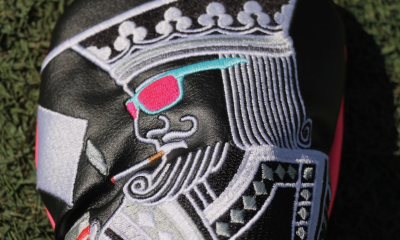
 Tour Photo Galleries3 weeks ago
Tour Photo Galleries3 weeks agoPhotos from the 2024 Arnold Palmer Invitational
-

 19th Hole3 weeks ago
19th Hole3 weeks agoJoaquin Niemann names 3 PGA Tour events he’d love to play each year ‘in a perfect world’
-

 19th Hole3 weeks ago
19th Hole3 weeks ago‘Seems suspect’ – PGA Tour pro hits out at decision to hand Adam Scott and Webb Simpson Bay Hill sponsor exemptions
-

 Equipment3 weeks ago
Equipment3 weeks agoSpotted: Bettinardi irons at the Arnold Palmer Invitational
-

 19th Hole2 weeks ago
19th Hole2 weeks agoPaulina Gretzky opens up on receiving death threats following DJ’s move to LIV Golf
-

 19th Hole3 weeks ago
19th Hole3 weeks agoVincenzi’s 2024 Arnold Palmer Invitational betting preview: Big names ready to pounce at Bay Hill
-

 19th Hole2 weeks ago
19th Hole2 weeks agoVincenzi’s LIV Golf Hong Kong betting preview: Trio of major champs primed for big week

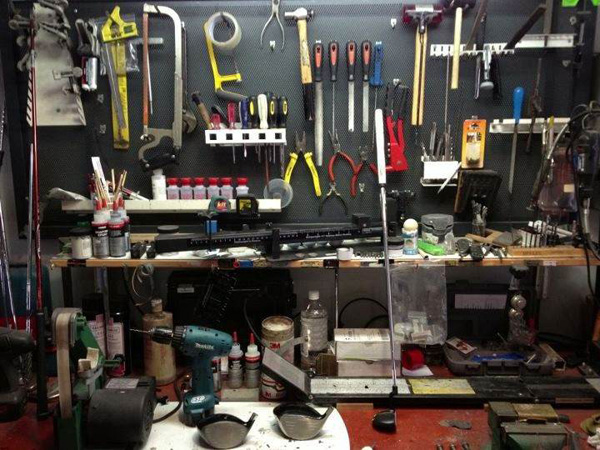
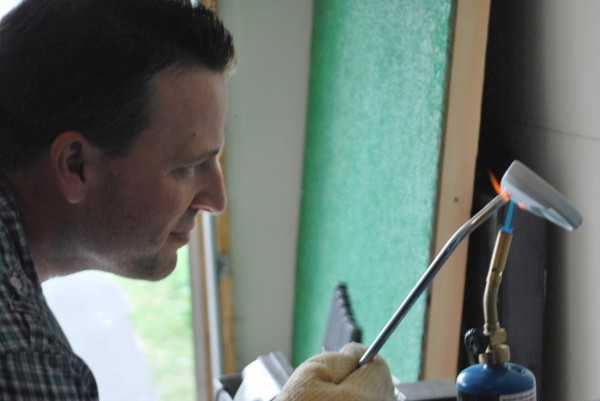
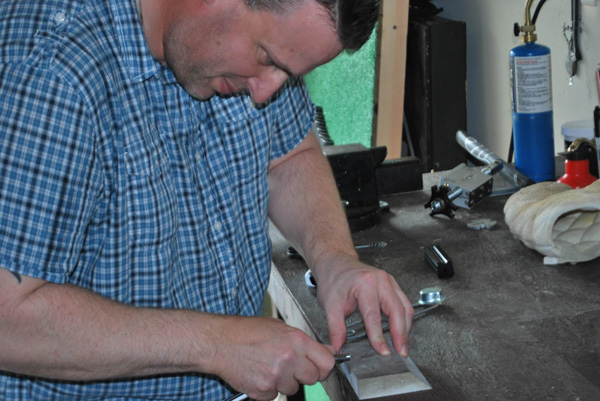


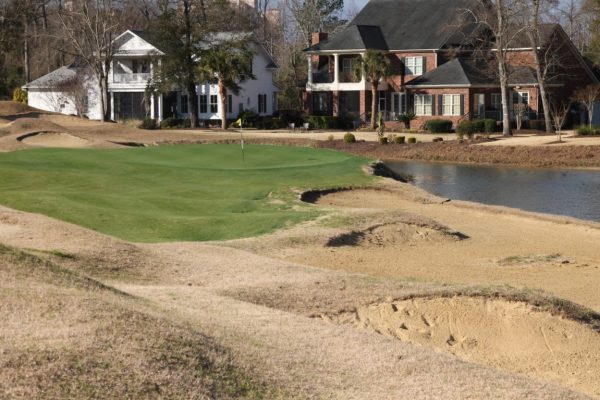
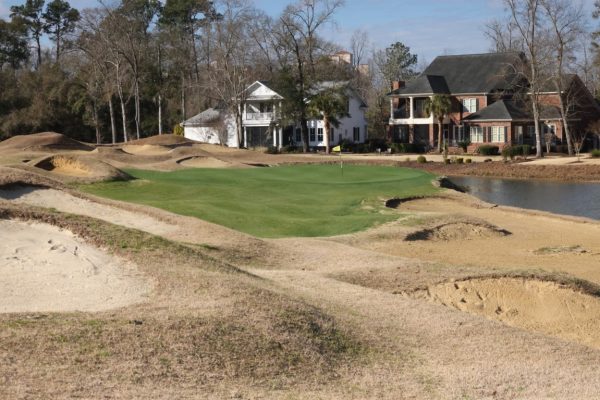
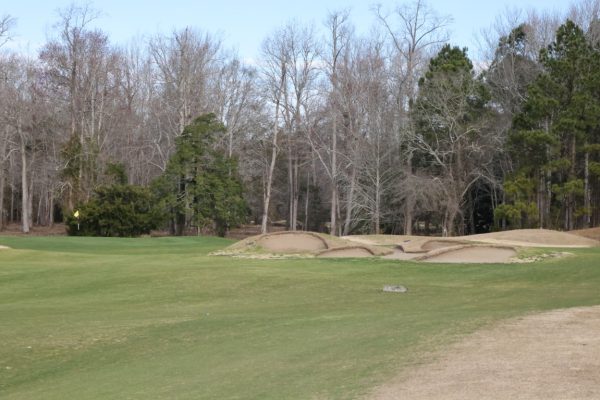



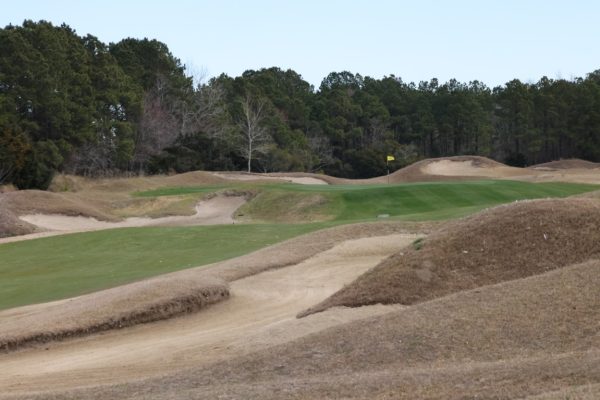
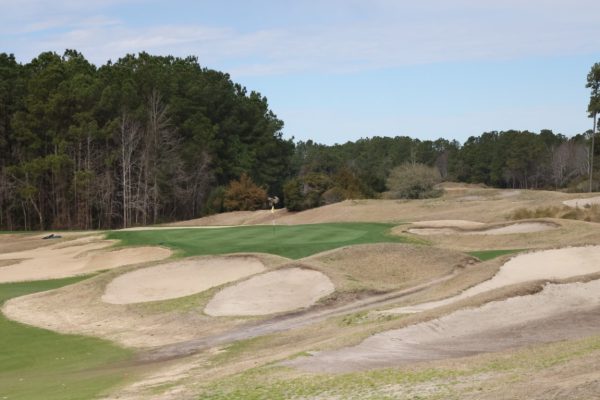
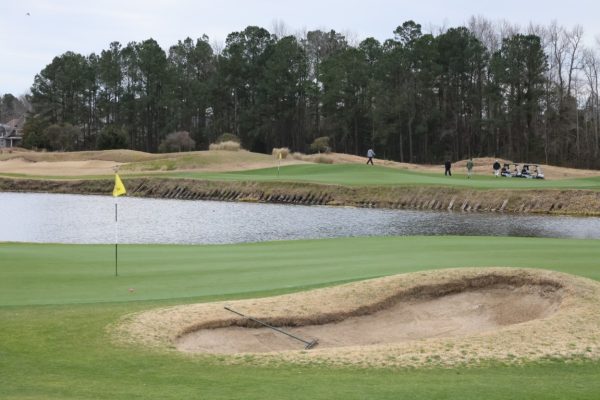

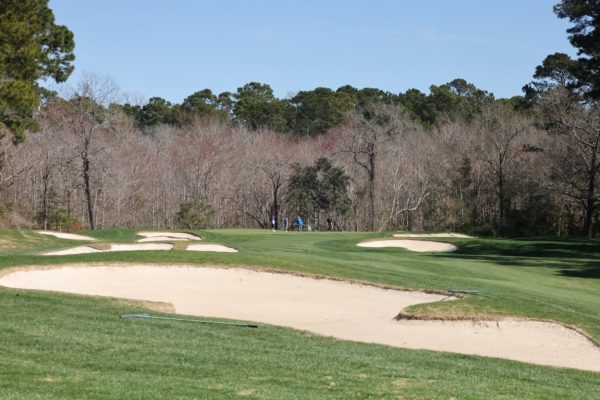
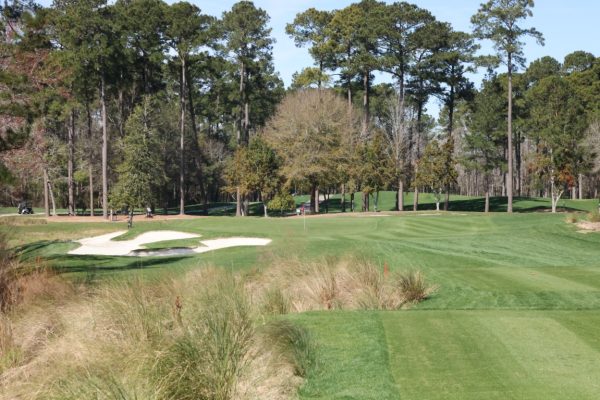
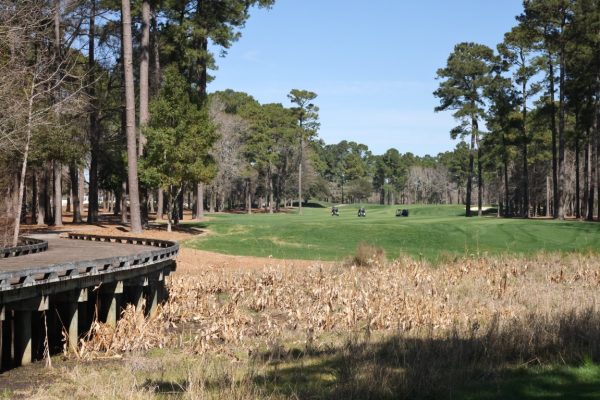

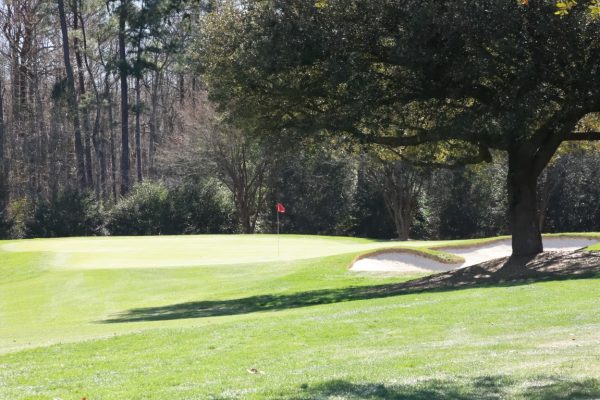
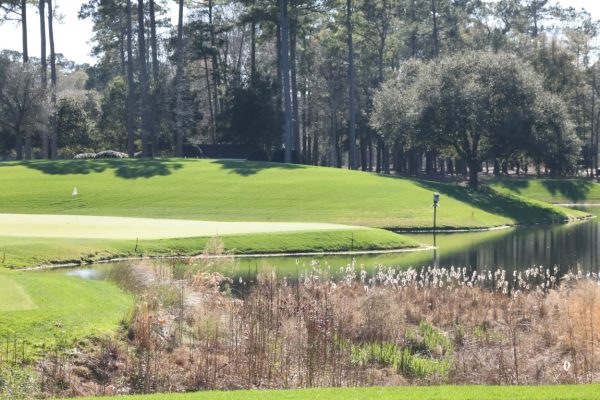

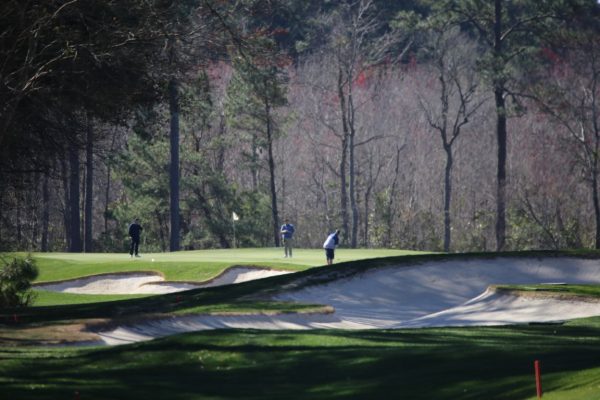

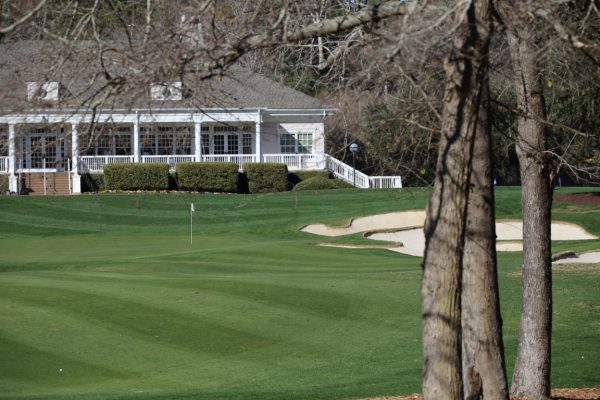



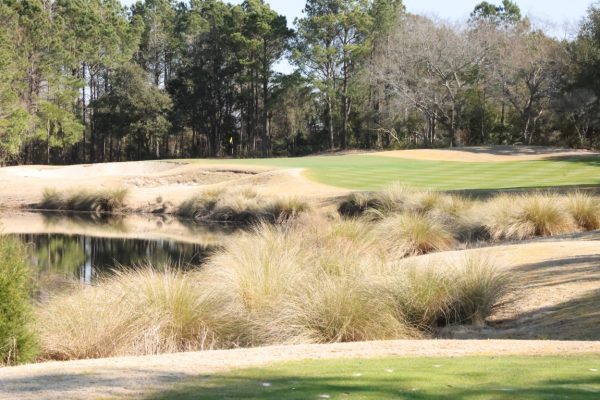
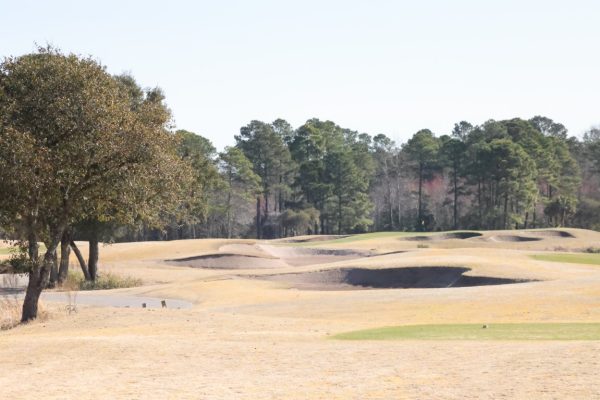

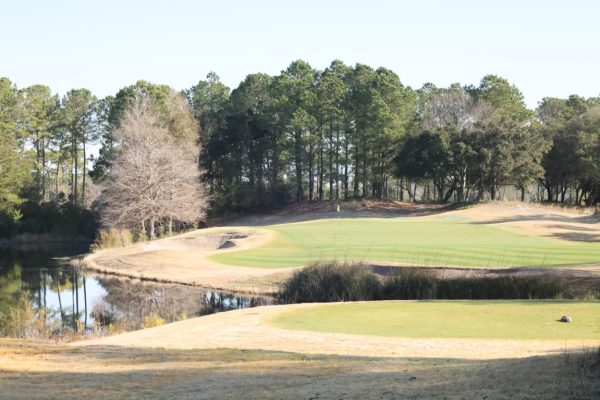

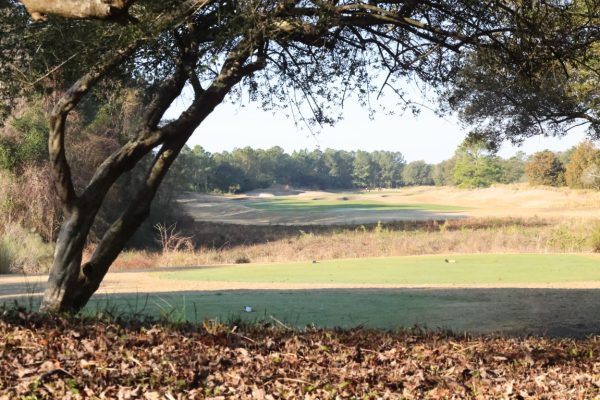
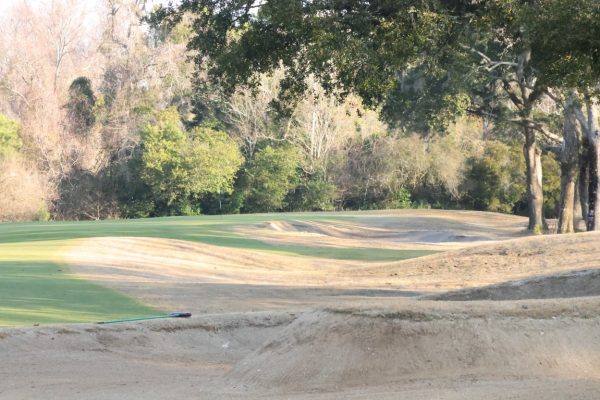
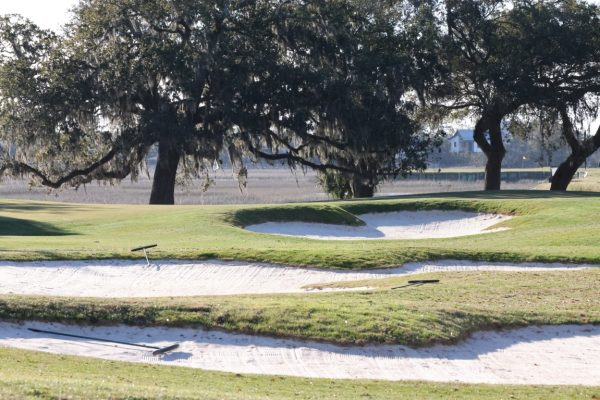

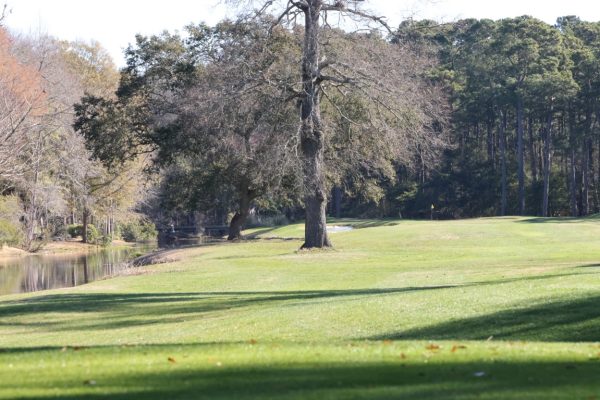
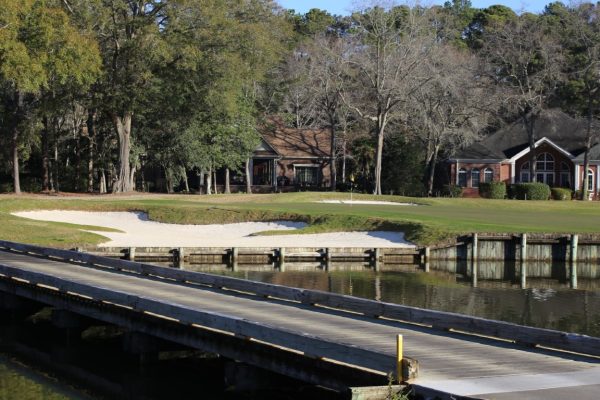
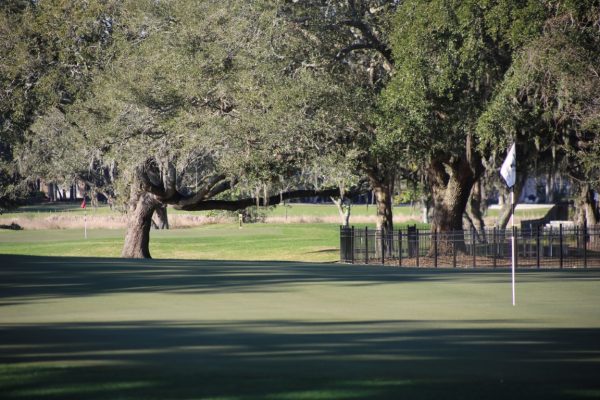
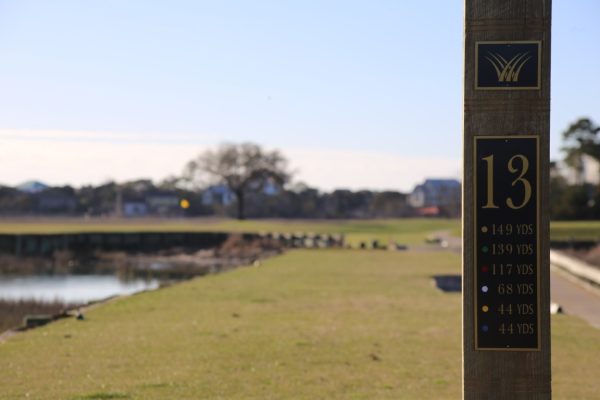

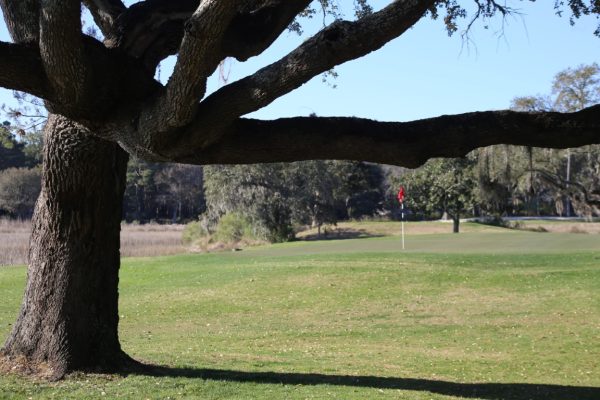
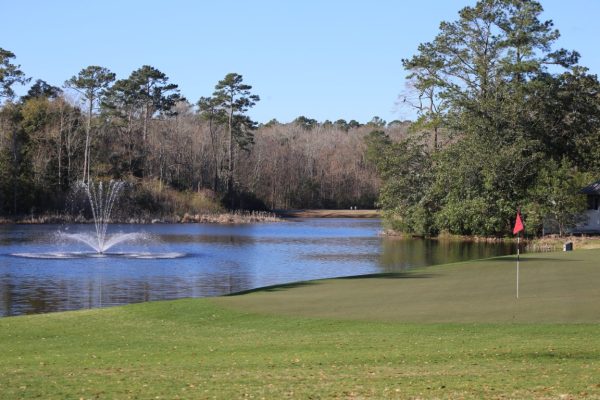
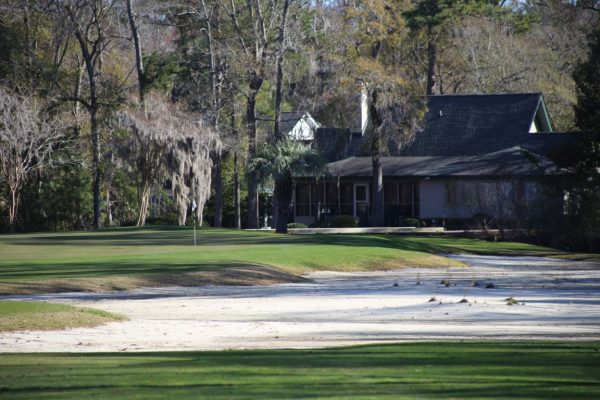











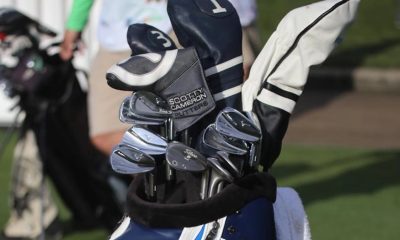



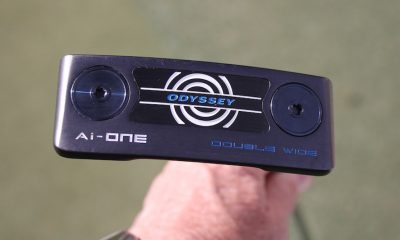

Greg Pickett
Jan 4, 2015 at 9:17 pm
Over 40 years in club repairs and club building , even built a club with my own name. Worked for Bert Dargie company in Memphis when I was 16 years old . Had my own business doing over $500,000 books show it , closed business when times got tough in Memphis , but looking to go back in if I can find a partner , don’t want to do it all myself. Anyone interested E – mail me . [email protected] .
Katharine Merical
Aug 21, 2014 at 9:09 pm
You already know thus drastically with regards to the following subject, created myself singularly ponder over it out of a great number of diversified aspects. Its similar to individuals are not interested with the exception of it is something to perform with Woman coo! Your own personal things superb. Constantly handle it down!
Forsbrand
Oct 7, 2013 at 3:21 pm
Love the fact the guy heating the putter head has no safety glasses on, especially when there is another article on here talking about having the right safety equipment!
Timanator
Sep 21, 2013 at 1:31 pm
Great article, thanks for taking your time to spell it all out.
Joe Golfer
Jul 22, 2013 at 3:49 pm
Would definitely recommend that folks measure the amount of the two parts needed for the epoxy, the base and the activator.
20 years ago, one could almost eyeball it, as the two parts had basically the same viscosity/consistency as eachother.
Nowadays one part is much more fluid than the other with the modern epoxies. If one pours out two similar-looking size amounts on a piece of paper prior to mixing, you WILL be getting it wrong, and you’ll probably end up with a clubhead that very gradually begins slipping off your customer’s shaft over time, leaving a gap between hosel and ferrule.
Little measuring cups with graduated lines for measuring are needed to make sure you have equal amounts of Part A and Part B of your epoxy prior to mixing. Just eyeballing it won’t work nowadays.
Lance Dahl
Jul 7, 2013 at 10:53 am
Nice write up Kadin. Thus should be very helpful for folks on here.
Kadin Mahmet
Jun 28, 2013 at 12:01 pm
Yes, a spine finder can also be found at a decent price as well.
Kridian
Jun 28, 2013 at 3:21 am
I think a Spline Finder should be on one of those lists.
Andrew
Jun 27, 2013 at 12:31 pm
Great read, thouroughly enjoyed that.
I’ve done my own grips for awhile now and have been looking at doing some shaft replacements and this certainly gives me a boost of confidence that I can do them.
Chuck
Jun 27, 2013 at 11:09 am
Very nicely done.
A comment, and a couple of questions.
First, a high-quality club ruler (Mitchell Golf’s is the one I recommend) is the first place that I’d spend a little (very little) extra money. SO much more easy than a standard 48″ ruler. Nobody thinks about it, until they have owned and used a good golfclub-specific ruler.
Second; what’s “A reasonable quality graphite shaft puller tool…”? Brands and models, please. That type of tool is fraught with a bunch of designs that are cuaght up in competing patent-violation claims. There ought to be a good, cheap shaft puller for less than $400. The best one I ever saw was the Silvestri product, which was chased out of business years ago.
Third; what are “bamboo skewers split lengthwise” used for? I was thinking of using them to spear olives for a martini. But not for golf club repair.
Also; it was GREAT advice to skip the plumbing-style rotating pipe/shaft cutters. They ARE a pain in the butt. Literally. Get a cutoff saw or a cutoff wheel for a grinder motor. Just do it.
Kadin Mahmet
Jun 28, 2013 at 12:00 pm
Thanks for taking the time to comment. Bamboo skewers are cut in half and can be used to apply epoxy to shafts and heads. The shaft puller I use,wasI purchased from Golf Works for $75 and works great.
Joe Golfer
Jul 22, 2013 at 3:42 pm
Thanks. I was wondering about those bamboo skewers myself.
I generally use popsicle sticks, split in half lengthwise, but have improvised with many things in the past.
tiger168
Jun 26, 2013 at 3:54 pm
Love the articles, the journey itself is the ultimate payback. I just started building my work bench last winter. One thing I told myself is the caring for the environment. Since club repair really require lots of chemicals in the old way of doing it. I am on my journey to find my own way to better club repair by not using as much chemical as possible. Such as using air to remove and install grips and who says you must use chemical to secure the grips. And heat gun is not as friendly as good old natural gas torch. Looking at all the packaging and stuff around the parts and materials for preparing and containing club repairing parts/materials, it’s really sad how wasteful they are; and unnecessary. Many GolfWRXers do minor club repair and even inventing/building their own tools/ways which are just awesome to read and share. I love this web site/forum for all of us to share and experience and setting higher goals as a golfer. Only when you start doing club repairs, then I have found myself playing golf at a different level then my buddies who do not. I now have a lie/loft adjust machine as the next step of my journey. Oh, BTW, I bought everything used, except supplies, thanks for the WRX classified sections and I hate eBay!!! LOL… Craigslist is the way to go!!! Thanks WRX…
Kadin Mahmet
Jun 26, 2013 at 3:41 pm
Thank you all for the kind words, I really appreciate that! I’m glad you liked it. This was a fun topic to cover and speaking with Tom Wishon was a pleasure. His reputation as a Master in the industry proceeds him!
Sean Matheson
Jun 26, 2013 at 3:26 pm
Definitely a very helpful article. Up in Canada, components and service can tend to be very expensive in stores, so having the know how could pay off greatly in the long run.
Mr. Blair M. Phillips
Jun 26, 2013 at 11:43 am
I’ve been repairing, rebuilding and restoring older persimmon woods for about 5 years now. I’ve learned so much from others. This type of article helps those who prefer todays metal woods and graphite shafts. I was taught that,” •Not roughing up the tip of STEEL shafts enough” can cause a “failure in the field” but I have been guilty of “too much epoxy is used, most it ends up being pushed up the inside of the tip of the shaft, which presents the risk of it breaking loose later on to cause a rattle in the shaft and too much epoxy adds to the weight of the head and could cause your final swing weight to be higher than what you wanted.” I’ll have to make a mental note of that and make sure that in the future, I don’t use too much epoxy.
Max
Canada
bonneaustein
Jun 26, 2013 at 11:35 am
I love tinkering with equipment. I actually use the side of a grinding wheel to lightly abrade steel stafts while continually rotating the shaft.
hayzooos
Jun 26, 2013 at 1:06 am
Nice article Kadin, very well put together. I used to do simple stuff a few years back, but since moving to Chicago, don’t have all the right gear. Looking forward to getting back into it soon and will certainly reference this article!
Photo artist
Jun 25, 2013 at 9:47 pm
Excellent article. Great starting point for anyone looking to get into club repair.